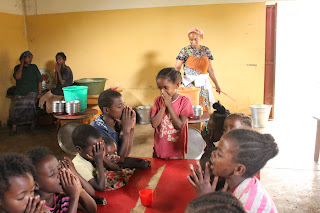Six months ago I started my
mission at a formation camp with VIDES+USA in San Antonio, Texas where I was
introduced and accepted into the wonderful community of the Salesian
Sisters. The formation camp provided a good introduction to the values and
educational methods promoted by the Sisters in the missions that they operate in.
I knew that it was not going to be easy serving my mission in Ethiopia, but it
was a challenge that I was looking for. It was also very important for me that
I do this experience through a Catholic organization and VIDES, through the
Salesian Sisters, proved to be an excellent choice. In addition, Ethiopia has a rich history with
Christianity, dating back to biblical times, so it made the experience that
much more meaningful.
To recap, my mission in
Dilla was to teach English to community college-level students. It provided to be a challenging mission at
the beginning not just because it was the first time teaching English but also because
I had to teach students from a different culture/background. English is not a
mandatory subject but since the semester-end examinations that are administered
by the local government are all in English, the students are somehow expected
to know and understand the language while taking their exams. Well, the staff at Mary Help College did an
excellent job this semester as all the students succeeded in passing their COC
examinations (100% passing rate), which was a first for the school. There was much joy and celebrations at the
school, which was capped by a wonderful graduation ceremony. But while I was able to complete my service
of teaching English there were so many other things that my students and the
community taught me during my stay in Dilla.
During my mission in
Ethiopia, I was able to see first hand the great work that the Salesian Fathers
and Sisters do for the community in Dilla. From the adoption program, to the
feeding center, and the schools (kindergarten, primary, secondary, and
college-level) that they operate, the Salesians really try to do everything to
help the families in the community have better lives. I also had the opportunity to visit their
missions in other parts of the country, where they run similar programs to help
the children from these communities. For
many families, the missions not only help provide their children with a better
education but are also a source of employment.
What I admire the most is how the Sisters, many of whom left their
homeland to go on mission, have dedicated their time, love, energy and faith to
the people of this country.
At the end of the semester I
traveled a bit to visit the northern part of the country, which contains many
historical sites and beautiful landscapes. I saw the Blue Nile Waterfalls, the
monolithic temples of Lalibela, the ancient stelas in Axum, as well as
monasteries dating back 800 hundred years. Ethiopia is a beautiful country with
kind people and a proud and ancient history.
The trip made me realize though that I was grateful and fortunate to
have spent my time in Dilla. I returned
to Dilla in time to witness the kindergarten and college graduation ceremonies,
which are momentous affairs for the students and their families. This past Friday was sadly my last day in
Dilla but these past few weeks have been very special and memorable as we said our
farewells. Overall, I will definitely miss the people, the Sisters, my
students, the staff, and the smiling children, all of whom made me feel at home
over the past five months.
So what’s next in the
horizon? I will be in Italy for one week to attend a conference for VIDES International, the organization that I am volunteering
with. VIDES missioners from around the
world will share their moments and lessons learned from their different
missions. After a brief break to visit
family and friends back home, I will return to volunteer with the Sisters but
this time in Geneva, Switzerland. The
Sisters have a human rights office that collaborates closely with the United Nations. It will be a different experience and type of
work but I am hoping that I can incorporate my on the ground experience in
Ethiopia with the human rights work that the Sisters promote in Geneva. So long
for now, have a great summer and tune in for my next blog series, Discovering
CHRISTian in Geneva!



























